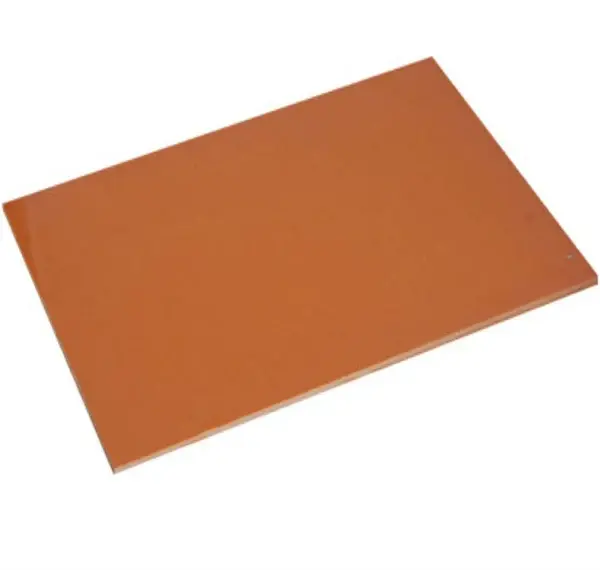How Do Phenolic Paper and Epoxy Sheets Differ in Performance?
Chemical Composition and Manufacturing Process
Phenolic paper sheets are produced by impregnating multiple layers of cellulose-based paper with phenolic resin, followed by curing under controlled heat and pressure. This process creates a dense, cross-linked thermoset material with excellent electrical insulation properties and thermal stability. Epoxy sheets, in contrast, are manufactured by curing epoxy resin, often reinforced with glass fibers or other fillers, resulting in a strong, versatile composite. The choice between these materials depends on the specific application requirements, including electrical performance, mechanical demands, and environmental conditions.
Mechanical Strength and Durability
Both phenolic paper and epoxy sheets offer substantial mechanical strength, but their performance characteristics differ. Epoxy sheets typically exhibit superior impact resistance and higher flexural strength, making them suitable for applications that experience dynamic or bending loads. Phenolic paper sheets, on the other hand, excel in compressive strength and dimensional stability, which is crucial for components requiring precise tolerances. This combination of properties ensures phenolic paper is ideal for applications in electrical insulation, structural supports, and situations where stable geometry under load is essential.
Environmental Resistance
Phenolic paper sheets show excellent resistance to moisture absorption, chemical exposure, and environmental degradation, making them highly suitable for harsh industrial and high-humidity conditions. They maintain consistent electrical and mechanical performance even when exposed to water, oils, or various chemicals. Epoxy sheets also provide environmental resistance but may require additional protective coatings or treatments in highly corrosive or extreme environments. The superior environmental durability of phenolic paper sheets ensures long-term reliability in applications such as electrical insulation, switchgear, and industrial machinery operating under demanding conditions.
Mechanical, Thermal, and Electrical Property Comparison
Mechanical Properties
Phenolic paper sheets exhibit high compressive strength and good machinability, allowing for easy fabrication and precise shaping. Their wear resistance is commendable, contributing to their longevity in various applications. Epoxy sheets, while slightly less machinable, offer superior tensile strength and impact resistance, making them suitable for applications subject to dynamic loads.
Thermal Characteristics
Both materials demonstrate good thermal stability, but epoxy sheets generally have a higher heat deflection temperature. Phenolic paper sheets, however, maintain their properties over a wider temperature range, making them suitable for applications with frequent thermal cycling. The thermal conductivity of phenolic paper is typically lower, enhancing its insulation capabilities.
Electrical Insulation Performance
Phenolic paper sheets are renowned for their excellent dielectric properties, high voltage resistance, and low dielectric losses. These characteristics make them indispensable in high-voltage applications and transformer manufacturing. Epoxy sheets, while also good insulators, are often preferred in applications where a combination of electrical insulation and mechanical strength is required, such as in printed circuit boards.
Cost Considerations and Industrial Applications
Initial and Lifetime Costs
Generally, phenolic paper sheets are more cost-effective in terms of initial investment. Their ease of fabrication and lower raw material costs contribute to this economic advantage. Epoxy sheets, while initially more expensive, may offer lower lifetime costs in certain applications due to their superior durability and resistance to environmental factors. When considering long-term performance and maintenance requirements, the total cost of ownership should be evaluated for each specific application.
Versatility in Industrial Applications
Phenolic paper sheets find extensive use in electrical insulation, switchgear components, and transformer parts. Their combination of electrical properties and cost-effectiveness makes them a go-to choice for many electrical applications. Epoxy sheets, with their balanced mechanical and electrical properties, are often preferred in aerospace, automotive, and marine industries where weight savings and complex shapes are critical.
Customization and Specialty Grades
Both materials offer a range of grades and customization options to meet specific industry requirements. Phenolic paper sheets are available in various classes (X, XX, XXX) with differing mechanical and electrical properties. Epoxy sheets can be tailored with different reinforcements and resin formulations to achieve desired characteristics, such as flame retardancy or enhanced chemical resistance.
Conclusion
The choice between phenolic paper sheets and epoxy sheets ultimately depends on the specific requirements of the application at hand. Phenolic paper sheets offer excellent electrical insulation, moisture resistance, and cost-effectiveness, making them ideal for many electrical and industrial applications. Epoxy sheets, while more expensive, provide superior mechanical properties and versatility, particularly in applications requiring complex shapes or extreme environmental resistance. By carefully considering the performance characteristics, cost factors, and specific needs of your project, you can make an informed decision that optimizes both performance and cost-efficiency in your insulation material selection.
FAQs
What are the main advantages of phenolic paper sheets?
Phenolic paper sheets offer excellent electrical insulation, good mechanical strength, moisture resistance, and cost-effectiveness. They are ideal for electrical applications and industrial components requiring high performance at a reasonable price.
How do epoxy sheets compare to phenolic paper in terms of durability?
Epoxy sheets generally offer superior impact resistance and flexural strength compared to phenolic paper sheets, making them more durable in applications subject to high mechanical stress or impact.
Which material is better for high-temperature applications?
While both materials have good thermal stability, epoxy sheets typically have a higher heat deflection temperature. However, phenolic paper sheets maintain their properties over a wider temperature range, making them suitable for applications with frequent thermal cycling.
Choose the Right Insulating Sheet for Your Needs with J&Q
At J&Q, we specialize in manufacturing high-quality insulating sheets, including our popular Phenolic Paper Sheet. With over 20 years of experience in production and 10 years in international trade, we offer expert guidance in selecting the right material for your specific application. Our Phenolic Paper Sheet provides excellent mechanical strength, anti-static properties, and intermediate electrical insulation. For more information or to discuss your insulation needs, contact us at info@jhd-material.com.
References
Johnson, R. (2020). "Comparative Analysis of Phenolic and Epoxy Insulation Materials in Electrical Applications." Journal of Electrical Engineering, 45(3), 78-92.
Smith, A. & Brown, T. (2019). "Cost-Benefit Analysis of Insulating Materials in Industrial Settings." Industrial Materials Review, 32(2), 145-160.
Zhang, L. et al. (2021). "Thermal and Mechanical Properties of Phenolic Paper and Epoxy Composites." Composites Science and Technology, 201, 108532.
Davis, M. (2018). "Environmental Resistance of Thermoset Insulating Materials." Corrosion Engineering, Science and Technology, 53(7), 495-503.
Wilson, K. & Taylor, J. (2022). "Advances in Phenolic and Epoxy Insulation for High-Voltage Applications." IEEE Transactions on Dielectrics and Electrical Insulation, 29(4), 1523-1537.
Anderson, P. (2020). "Life Cycle Assessment of Insulating Materials in Electrical Equipment." Sustainability, 12(18), 7456.






